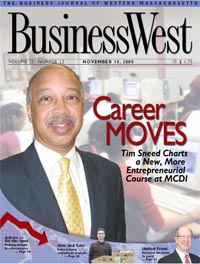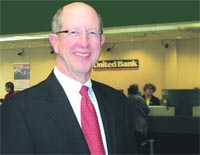| Abare, Margaret E.
28 Miles Morgan Court
Wilbraham, MA 01095
Chapter: 7
Filing Date: 09/23/08 Andrews, Raymond L.
69 Dalton Ave.
Pittsfield, MA 01201
Chapter: 7
Filing Date: 09/19/08 Aquarius Pools & Spas
Motta, Daniel
Motta, AnneLee
19 Winsor St.
PO Box 329
Ludlow, MA 01056
Chapter: 7
Filing Date: 09/19/08 Beaudoin, Bernadette
a/k/a Bator, Bernadette
29 Hampden St. 2nd Fl.
Westfield, MA 01085
Chapter: 7
Filing Date: 09/27/08 Berube-Dearness, Karen A.
P.O. Box 26
Belchertown, MA 01007
Chapter: 7
Filing Date: 09/17/08 Bourque, David A.
Bourque, Kathleen S.
15 Granger Place
West Springfield, MA 01089
Chapter: 13
Filing Date: 09/29/08 Bowen, Jerry P.
164 Elizabeth Ave.
Westfield, MA 01085
Chapter: 7
Filing Date: 09/26/08 Chicopee Computer & Networking
Lostaglia, Patrick
15 Erline St.
Chicopee, MA 01013
Chapter: 7
Filing Date: 09/26/08 Creek, Gerald A.
Creek, Pamela S.
105 Reservoir Road
Westhampton, MA 01027
Chapter: 7
Filing Date: 09/23/08 Crouch, Margaret Othelle
PO Box 1035
Easthampton, MA 01027
Chapter: 7
Filing Date: 09/19/08 Cunningham, William A.
3 Wenonah Place
Longmeadow, MA 01106
Chapter: 7
Filing Date: 09/19/08 Daniels, Edward C.
28 Woodbine Ave.
Pittsfield, MA 01201
Chapter: 7
Filing Date: 09/20/08 DeGray, Michelle A.
209 Hanson Dr.
Springfield, MA 01128
Chapter: 7
Filing Date: 09/25/08 Delgado, Olga I.
191 Lamont St.
Springfield, MA 01119
Chapter: 7
Filing Date: 09/24/08 Dellea, Barbara A.
290 State Road, Apt. #3
North Adams, MA 01247
Chapter: 7
Filing Date: 09/18/08 Demarey, Dawn Marie
280 Rock Valley Road
Holyoke, MA 01040
Chapter: 13
Filing Date: 09/22/08 Devine Design
Devine, Stephen
Devine, Linda M.
49 Coleman Road
Southampton, MA 01073
Chapter: 7
Filing Date: 09/25/08 Dew, Kim M.
a/k/a Dew, Kimberly M.
14 Little Ave.
Greenfield, MA 01301
Chapter: 7
Filing Date: 09/24/08 Eddy, Arthur L.
Eddy, Maryanne
649 Prospect St., Apt. 1E
Chicopee, MA 01020
Chapter: 7
Filing Date: 09/24/08 Estremera, Sonia
a/k/a Estremera Crespo, Sonia
1386 Dwight St.
Springfield, MA 01107
Chapter: 7
Filing Date: 09/19/08 Falcone, Christine M.
20 Elizabeth St., Apt. A
Pittsfield, MA 01201
Chapter: 7
Filing Date: 09/19/08 Forestier, Josefina
1823 Roosevelt Ave.
Springfield, MA 01109
Chapter: 7
Filing Date: 09/18/08 Gagliardi, Carol A.
440 North St., Apt. #23
Pittsfield, MA 01201
Chapter: 7
Filing Date: 09/18/08 Gagnon, Deborah Ann
35 Kings Ter.
West Springfield, MA 01089
Chapter: 7
Filing Date: 09/19/08 Gaida, Thomas A.
699 Millers Falls Road
Northfield, MA 01360
Chapter: 7
Filing Date: 09/25/08 Garcia, Deiby
Garcia, Shirley A.
24 Northwood St.
Chicopee, MA 01013
Chapter: 7
Filing Date: 09/24/08 Gilpatric, Alysha A.
47 North St.
Great Barrington, MA 01230
Chapter: 7
Filing Date: 09/24/08 Gosselin, Rhonda Lynn
16 Rolf Ave.
Chicopee, MA 01020
Chapter: 13
Filing Date: 09/18/08 Grandy, Alan T.
272 Meadow Dr.
Tolland, MA 01034
Chapter: 7
Filing Date: 09/25/08 Grandy, Ashley H.
a/k/a Donnellan, Ashley H.
272 Meadow Dr.
Granville, MA 01034
Chapter: 7
Filing Date: 09/25/08 Gutierrez, Daniel D.
a/k/a Gutierrez, Daniela A.
a/k/a Cardoso, Daniela A.
57 Myrtle St.
Pittsfield, MA 01201
Chapter: 7
Filing Date: 09/18/08 Habib, Hamid
32A Everett Ave.
Belchertown, MA 01007
Chapter: 7
Filing Date: 09/16/08 Hall, Steven C.
395 Porter Lake Dr.
Longmeadow, MA 01106
Chapter: 7
Filing Date: 09/18/08 Hammond, Mary M.
a/k/a Payne, Mary M.
511 Vernon Ave.
P.O. Box 159
South Barre, MA 01074
Chapter: 7
Filing Date: 09/18/08 Han, Keun S.
33 Somers Road
East Longmeadow, MA 01028
Chapter: 7
Filing Date: 09/23/08 Hannula, Robert Andrew
85 Pequoig Ave., Apt. #2
Athol, MA 01331
Chapter: 7
Filing Date: 09/19/08 Harris, Shawn M.
P.O. Box 824
Belchertown, MA 01007
Chapter: 7
Filing Date: 09/29/08 Heap, Joanne Mary
a/k/a Heap-Coughlin, Joanne M.
1066 Frank Smith Road
Longmeadow, MA 01106
Chapter: 7
Filing Date: 09/22/08 Hobert, Cynthia L.
129 Sheehan Dr.
Holyoke, MA 01040
Chapter: 7
Filing Date: 09/24/08 Horne, Leonard J.
Horne, Pauline M.
198 College St.
Chicopee, MA 01020
Chapter: 7
Filing Date: 09/18/08 Housand, Sarah L.
P.O. Box 683
West Warren, MA 01092
Chapter: 7
Filing Date: 09/25/08 Jewett, Dana A.
25 Richard Eger Dr.
Holyoke, MA 01040
Chapter: 7
Filing Date: 09/26/08 Kelly, Geoffrey M.
92 Johnson St.
Springfield, MA 01108
Chapter: 13
Filing Date: 09/19/08 Kendall, Harvey A.
Kendall, Susan J.
21 Arnold St.
Feeding Hills, MA 01030
Chapter: 7
Filing Date: 09/23/08 Kimberley, Victoria A.
25 Leonard Ave.
Westfield, MA 01085
Chapter: 7
Filing Date: 09/23/08 King, Peter D.
171 Colonial Dr.
Athol, MA 01331
Chapter: 7
Filing Date: 09/16/08 Kum, Roger Olston
128 Benton St.
Springfield, MA 01109
Chapter: 13
Filing Date: 09/16/08 Lacascia, Matthew David
PO Box 53
Bondsville, MA 01009
Chapter: 7
Filing Date: 09/24/08
| | Leclair, John David
35 Kings Ter.
West Springfield, MA 01089
Chapter: 7
Filing Date: 09/19/08 Lococo, Todd Michael
430 Acrebrook Dr.
Florence, MA 01062
Chapter: 7
Filing Date: 09/29/08 Lyon, Janet E.
a/k/a Ladner, Janet E.
1 Corey Colonial
Agawam, MA 01001
Chapter: 7
Filing Date: 09/26/08 MacNeil, Cheryl L.
Kron, Michael P.
15 Cooper St.
Springfield, MA 01108
Chapter: 7
Filing Date: 09/29/08 Marshuk, Dawn
8 Villone Dr., Apt. 8
Leeds, MA 01053
Chapter: 7
Filing Date: 09/24/08 Mayock, Frederick O.
123 Academy Dr.
Longmeadow, MA 01106
Chapter: 7
Filing Date: 09/24/08 McCarthy, Linda M.
120 Ashgrove St.
Chicopee, MA 01020
Chapter: 7
Filing Date: 09/26/08 McFaul, Mary Katherine
49 Moriarty Road
Ware, MA 01082
Chapter: 7
Filing Date: 09/24/08 Medina, Emily
56 Springfield St.
Chicopee, MA 01013
Chapter: 7
Filing Date: 09/26/08 Montanez, Michelle M.
66 Palmer Road
Monson, MA 01057
Chapter: 7
Filing Date: 09/24/08 Morrissette, Thomas J.
Morrissette, Joyce M.
84 Cooley Ave.
East Longmeadow, MA 01028
Chapter: 7
Filing Date: 09/29/08 Murphy, Suzanne C.
206 New Ludlow Road
Chicopee, MA 01020
Chapter: 7
Filing Date: 09/29/08 Neithercott, Peter H.R.
356 B Hatfield St.
Northampton, MA 01060
Chapter: 7
Filing Date: 09/29/08 Nguyen, Lien T.
15 Glendell Ter.
Springfield, MA 01108
Chapter: 7
Filing Date: 09/24/08 Ortiz, Carlos
Ortiz, Jeannette
a/k/a Cortes, Jeanette
13 Treetop Ave.
Springfield, MA 01118
Chapter: 7
Filing Date: 09/24/08 Ovchinnikova, Liliya
269 Chicopee St., Apt. 3
Chicopee, MA 01020
Chapter: 13
Filing Date: 09/18/08 Payne, Amanda M.
213 Prentice St.
Springfield, MA 01104
Chapter: 7
Filing Date: 09/25/08 Plouffe, Elizabeth
13B Washburn Ave.
Warren, MA 01083
Chapter: 7
Filing Date: 09/22/08 Privett, David W.
Privett, Joanne M.
102 Ludlow St.
Belchertown, MA 01007
Chapter: 7
Filing Date: 09/26/08 Proulx, Maureen Ann
PO Box 693
Chicopee, MA 01021
Chapter: 7
Filing Date: 09/16/08 Ratte, Michael Joseph
133 Highland Ave.
West Springfield, MA 01089
Chapter: 7
Filing Date: 09/22/08 Registry Plaza Inc.
Sundance Realty
P.O. Box 290
Hadley, MA 01035
Chapter: 11
Filing Date: 09/21/08 Rivera, Milton Luis
33 Parkin St.
Springfield, MA 01104
Chapter: 13
Filing Date: 09/29/08 Robbins, Kelly L.
61 East Palmer Park Dr.
Palmer, MA 01069
Chapter: 13
Filing Date: 09/16/08 Rossmiller, Jennifer Klock
a/k/a Klock, Jennifer Anne
a/k/a Williams, Jennifer Anne
94 Waldorf St.
Springfield, MA 01109
Chapter: 13
Filing Date: 09/29/08 Ruiz, Heliodora
18 Whitmore Dr.
Springfield, MA 01104
Chapter: 7
Filing Date: 09/29/08 Sandifer, Regina M.
463-B Crane Ave.
Pittsfield, MA 01201
Chapter: 7
Filing Date: 09/19/08 Savoy, Cynthia T.
68 Ogden St.
Indian Orchard, MA 01151
Chapter: 7
Filing Date: 09/27/08 Smith, Eric J.
Smith, Tammy L.
25 White St.
Westfield, MA 01085
Chapter: 13
Filing Date: 09/26/08 St. Pierre, Eric S.
164 Allen St.
Athol, MA 01331
Chapter: 13
Filing Date: 09/24/08 St. Pierre, Sharon M.
24 St. Pierres Lane
Westfield, MA 01085
Chapter: 7
Filing Date: 09/24/08 Stevens, Nancy L.
a/k/a Cormier, Nancy L.
160 Second St.
Pittsfield, MA 01201
Chapter: 7
Filing Date: 09/18/08 Therrien, Katherine M.
a/k/a Lanoue, Katherine M.
14 Sycamore St., Apt.
Westfield, MA 01085
Chapter: 7
Filing Date: 09/22/08 Tocci, Jamie
Tocci, Tammi L.
520 Chauncey Walker Road
Belchertown, MA 01007
Chapter: 7
Filing Date: 09/23/08 Tophill Farm
Shiny Pretty Things
O’Gorman, Rochelle M.
555 Devon Road
Lee, MA 01238
Chapter: 7
Filing Date: 09/23/08 Turcotte, Ralph M.
Turcotte, Patricia M.
5 Newton St.
Belchertown, MA 01007
Chapter: 7
Filing Date: 09/25/08 Valentine-Luszcz, Tawnya A.
a/k/a Luszcz, Tawnya A.
400 Maple St.
Springfield, MA 01105
Chapter: 7
Filing Date: 09/19/08 Velastegui, Robert Leonel
a/k/a Carrasco, Bob L.
a/k/a Velastegui-Carrasco, Bob
93 Highland Ave.
Ludlow, MA 01056
Chapter: 7
Filing Date: 09/29/08 Walker, Nicholas P.
Walker, Katie M.
640 Britton St.
Chicopee, MA 01020
Chapter: 7
Filing Date: 09/25/08 Watkins, Gloria Jean
59 Park St.
Turners Falls, MA 01376
Chapter: 13
Filing Date: 09/18/08 Weckstrom, Karl Bernhard
Weckstrom, Mary Ann
a/k/a Uhrmacher, Mary Ann
256 College Highway
Southampton, MA 01073
Chapter: 7
Filing Date: 09/16/08 Wells, Thomas M.
52 Parkside Ave.
Pittsfield, MA 01201
Chapter: 7
Filing Date: 09/24/08 White, James G.
97 Parallel St.
Springfield, MA 01104
Chapter: 13
Filing Date: 09/23/08 Whitney, Frederick M.
2283 Baptist Hill Road
Palmer, MA 01069
Chapter: 7
Filing Date: 09/16/08 Woods, William E.
223 Park Circle
Sturbridge, MA 01566
Chapter: 7
Filing Date: 09/19/08 Zeigen, Coleman Palmer
45 Holyoke St., Apt. G
Easthampton, MA 01027
Chapter: 7
Filing Date: 09/18/08 |
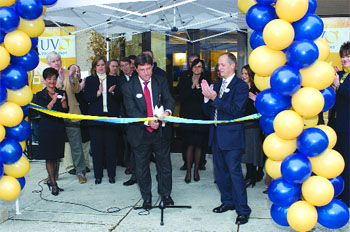

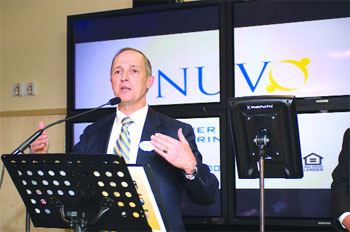
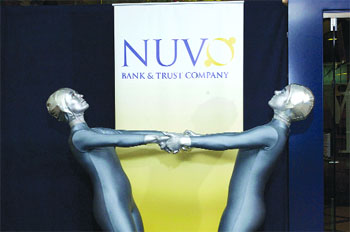
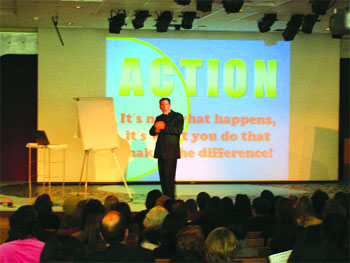
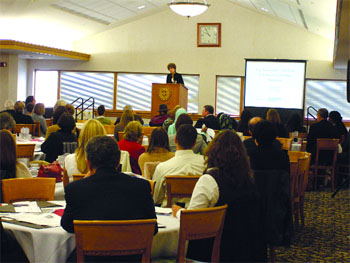



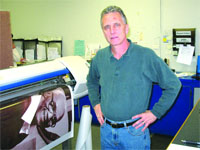
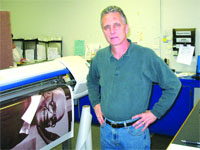

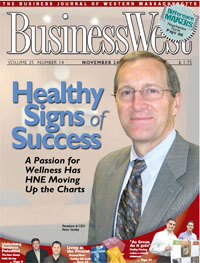
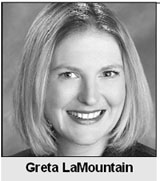 Greta LaMountain has joined the law firm of Bacon Wilson, P.C. of Springfield. LaMountain, a general practitioner with a focus on financial and real estate matters, will work out of the Amherst office.
Greta LaMountain has joined the law firm of Bacon Wilson, P.C. of Springfield. LaMountain, a general practitioner with a focus on financial and real estate matters, will work out of the Amherst office. 

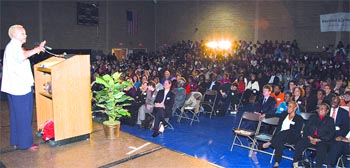
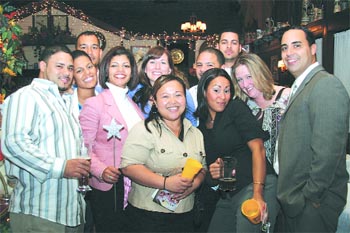
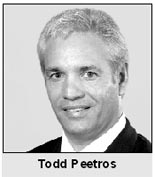 Todd Peetros has been named an Account Executive at Integrity Graphics Inc. of Windsor, Conn. He will be responsible for sales and the development of targeted markets.
Todd Peetros has been named an Account Executive at Integrity Graphics Inc. of Windsor, Conn. He will be responsible for sales and the development of targeted markets. 